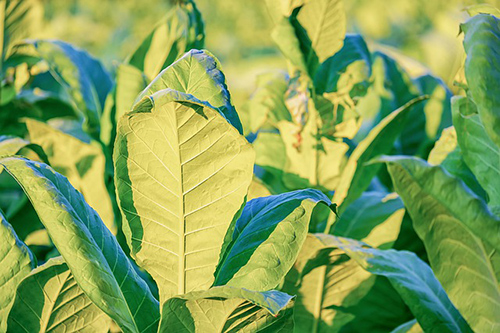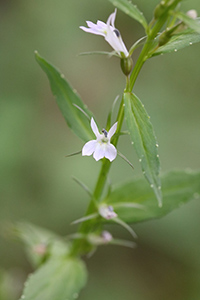Contents
The Spanish King Phillip II ordered Gonzalo Hernandez de Toledo to transport the tobacco plant to Europe. The first plants arrived in Europe in 1559, and soon, the first cultivations were established on the Iberian peninsula. The ambassador of France in Lisbon, Jean Nicot, believed that tobacco had great medicinal value and spread its seeds all over France and Europe.
“Tobacco is dangerous? What? A famous physician just prescribed it to me for asthma!”
The baseless fame of being medicinal brought about the inclusion of smoking and sniffing tobacco in social habits. In the mid-19th century, some physicians still prescribed smoking as a cure for lung disease.
Few people noticed at that time that the tobacco plant was toxic. One of the first voices to shout out the dangers of tobacco was Ellen G. White, an outstanding writer and educator, who wrote in 1875:
“tobacco is a slow and insidious poison, and its effects are more difficult to eliminate from the body than those of alcohol.”
Ellen G. White
Today, it is obvious how difficult it is to give up smoking, both because of the physical and psychological dependence tobacco causes.

Properties and Warning
Until the mid-20th century, scientists did not wholly prove the cancerous effects of tobacco. However, in the second half of this century, research on the harmful effects of the tobacco plant has increased. Hundreds of new studies reveal its noxiousness for the respiratory system, the arteries, the heart, the pancreas, the esophagus, and other organs every year.
Tobacco has become the drug that has produced the most diseases, the most deaths, and the highest expenditure worldwide, even more than illegal drugs such as cocaine or heroin. The European Union has launched a prevention program, “Europe Against Cancer,” whose first point is “Do not smoke.” If all Europeans gave up smoking, the figures for cancer-caused deaths would decrease by half.
The tobacco plant does not possess any medicinal properties. It is mentioned on this site because of its social and sanitary significance as a toxic drug. The composition of tobacco leaves is very complex. They contain lipids, hydrocarbons, gums, sugars, two heterocyclic (tabacine and tebanicline), chercitine, nicotinic, and chlorogenic acids, an essence, and several alkaloids, the most known being nicotine (1-3 percent), whose chemical formula is C10H14N2.

Nicotine produces transitory stimulation followed by depression of the central nervous system and all ganglions of the autonomic nervous system. It stimulates the adrenaline secretion on the suprarenal glands’ medulla, which causes vasoconstriction, tachycardia, hypertension, and excitation. High doses provoke cold sweat, shivers, vomiting, vibrations, and excitation. Nicotine is a potent poison. American natives used the juice of tobacco plant leaves to poison the points of their arrows.
A single drop of nicotine will cause the death of a large dog in a few minutes. The lethal dose for a human being is 50-60 mg, which is the amount that two middle-sized cigars commonly contain. Fortunately, when smoking, we only absorb 10 percent of the nicotine, and our body “learns” how to eliminate it, though the price is suffering its long-term toxic effects.
The smoke of the tobacco plant contains nicotine, irritant and cancerous tar, aldehydes, carbon monoxide, and up to 30 other toxic substances. It does not contain medicinal substances, vitamins, or nutrients.

Chronic toxicity due to tobacco produces stomatitis (mouth inflammation), chronic bronchitis, palpitations, angina pectoris, high blood pressure, lack of appetite, and sexual impotence, among other dysfunctions. Like any other drug, it causes:
- Physical and psychological dependence, with the urge to keep consuming tobacco so as not to feel let down.
- Tolerance is the need to increase the dose to obtain the same effects progressively.
Detoxification from tobacco requires extensive medical and psychological treatment, such as the one described in the well-known Breathe-Free Plan to stop smoking.
WARNING! Nicotine (Named after Jean Nicot) is used as an herbicide, bactericide, and very effective insecticide. As it is well absorbed through the skin, products containing nicotine must be handled with extreme care, as there have already been cases of fatal poisoning.
Tobacco Plant Scientific Facts
- Scientific name: Nicotiana tabacum L.
- French: Tabac.
- Spanish: Tabaco.
- Environment: Native to Central America, where it is still found wild, it is now widely farmed worldwide.
- Description: This is an annual herbaceous plant of the Solanaceae family whose stem may grow up to 1.7 meters high. It has large leaves with nerves marked on its back, a short petiole, and trumpet-shaped, pink or salmonid-colored flowers.
- Parts of the plant used: Leaves.
Lobelia: Indian Tobacco

The lobelia (Lobelia inflata L.), also known as Indian tobacco and asthma herb, is a North American plant of the Lobeliaceae family, containing lobeline, an alkaloid with similar, though less intense, effects than nicotine. It was used as an emetic (vomitive), antiasthmatic, and expectorant in former ages. It is no longer used as such because many other non-toxic plants have the same properties.
The lobelia has recently reemerged on the scene of the struggle against the tobacco plant. Those smokers who cannot give up their vice receive lobelia pills, and thus, the need for tobacco disappears. What is done is moving from nicotine addiction to lobeline addiction, but the latter’s toxic effects are milder and less able to produce dependence. Progressively, the consumption of lobeline is given up.
High doses of lobeline produce breathing difficulties, tachycardia, and hypotension. Substitute treatment with Lobeline is not ideal, though it may be helpful in those persistent cases of tobacco addiction that have overcome all other therapies. In Europe, a similar species is known as matacaballos (Lobelia urens L.), which is also toxic.
DISCLAIMER: All content on this website is presented solely for educational and informational objectives. Do not rely on the information provided as a replacement for advice, diagnosis, or treatment from a qualified medical expert. If you are pregnant, nursing, or have any preexisting medical concerns, talk to your doctor before using any herbal or natural medicines.
REFERENCES
- George D. Pamplona-Roger, M.D. “Encyclopedia of Medicinal Plants.” George D. Pamplona-Roger, M.D. Encyclopedia of Medicinal Plants. Ed. Francesc X. Gelabert. Vols. 1 San Fernando de Henares: Editorial Safeliz, 2000. 183, 184. Print. [Tobacco plant]
- Centers for Disease Control and Prevention (CDC): https://www.cdc.gov/tobacco/
- National Institutes of Health (NIH): https://www.ncbi.nlm.nih.gov/
- UTEP Herbal Safety: https://www.utep.edu/herbal-safety/herbal-facts/herbal%20facts%20sheet/tobacco.html
